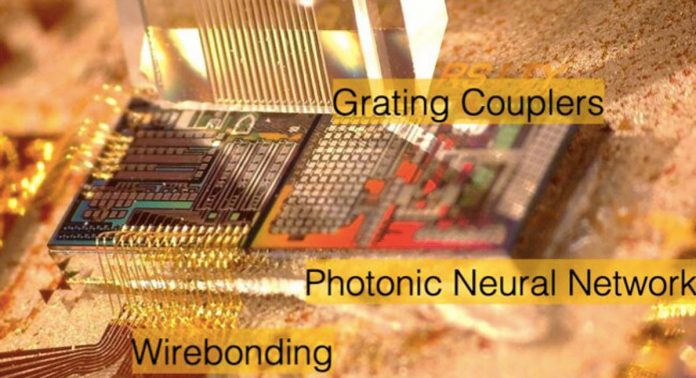The growth of the Internet was made possible by a technique called Digital Signal Processing (DSP). This helped in reducing transmission distortions. DSP is implemented with CMOS integrated circuits (ICs). So, it relies heavily on Moore’s Law. It has approached its limits in power dissipation and engineering solutions.
Distortion caused by fibre nonlinearity cannot be compensated by DSP. Because this needs too much computation power and resources. Fibre nonlinearities kept a limiting effect on long-distance “transmission” systems.
Princeton Lightwave Lab and NEC Laboratory America scientists have developed a new neural network hardware. This will help to overcome this limitation. The findings of the research have been published in Nature Electronics. The new innovation will run on a silicon-based photonic-electronic system. This system will outperform commercial DSP chips in throughput.
The scientists developed highly performing, photonics-based neuromorphic hardware. This new hardware is able to execute artificial neural networks at a nanosecond scale. So, this will be faster than conventional electronics-based systems.
Scientists created a new optical network-based architecture. This was based on the broadcast-and-weight protocol. This architecture allowed them to build large-scale optical networks. These networks comprised of photonic neurons and tenable micro-ring resonators. Here, photonic neurons and micro-ring resonators are connected to each other by optical waveguides on silicon chips.
Inside smart devices, DSPs can be found. This have increased the development of many systems connected to the internet. The upgrading of DSP implementations on CMOS semiconductor circuits depends on Moore’s Law. This limitation is important as semiconductors have reached their ultimate limit in power dissipation and density.
The new network developed by scientists is based on high-quality waveguides and photonic devices. This includes photodetectors and modulators which are designed to be used in optical communications. This will allow the network to support fibre communication rates. This will enable real-time processing using newly developed optical networks. Researchers created silicon neural network and this is fully programmable. This is based on broadcast-and-weight protocol.

Credit: Huang et al.
This new protocol will alter the transmission of signals through a filter. This will tune the filter along its transmission edge. This will multiply signals with a desired weight. The ‘weighted’ signals will be sent to a photodetector which will receive signals of multiple wavelengths in parallel and sum them together.
Photocurrent will be generated in this process and this will drive an optical modulator that converts electrical photocurrent into optical power. The photonic network of the scientists takes on nonlinear activation functions and will serve as artificial neurons.
The network can perform weight addition operations. This also has an improved interconnectivity. This can carry many signals at the same time. Wavelength multiplexing process enables it.
Silicon ‘photonic-electronic neural network’ is ideal for creating large systems that has hundreds of artificial neurons on individual chips. It needs only a few interconnection waveguides. This can create a variety of communication and processing devices.
This network can reduce the adverse effects of fibre nonlinearity on the performance of a trans-pacific optical-fibre transmission system which is 10,080 km long. Scientists think this can compensate for optical fibre nonlinearities. This will also improve the quality factor of the signal produced by the system.
A useful feature of the network is that it utilizes high quality waveguides and photonic devices. This makes it a promising solution to address the optical network capacity limits.
In future, this network will enhance the performance of optical communication tools. Scientists have already used this to address signal distortions in a single wavelength channel. This can also be applied in multiple WDM optical fibre systems.

